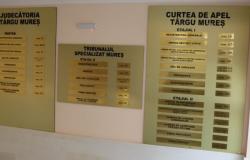
The team of the Image Archive of the Peasant’s Museum discovered one of the very few color photographs taken, through the autochromy process, in the Romanian space before the First World War and preserved until today, reports News.ro.
According to MNTR, this is perhaps the only color photo of a Romanian museum interior from the beginning of the 20th century documented to date – and certainly one of the very few known images of the first exhibition of the National Art Museum in the premises of the old Road Mint (1907-1912).
The Autochrome Lumière process is one of the first viable processes for making color photographs. It was patented by the Lumière brothers (the inventors of the cinema) in 1903, but became commercially available only in 1907. The process was based on the additive model of combining colors (red, yellow, blue). The glass support was first treated with a film of randomly pigmented starch at the microscopic level, so that the colored starch molecules acted as a color filter; the photosensitive emulsion was applied over this layer. The resulting photographic object was, in essence, a slide on glass that could be viewed, preferably with the help of a slide.
“In the Romanian space, autochromes were and remain a rarity. I had known for some time that Tzigara-Samurcaş’s Museum of National Art and Ethnography had commissioned Bucharest photographer Franz Duschek Jr. in early 1910 “four color clichés according to the Lumière system” with views from the museum – which was in itself an interesting piece of information for the early circulation of the process in the Romanian space, but the autochromes did not seem to have left any trace in the historical record of the Archive. I discovered the first and so far the only autochromy conserved in the Image Archive during the systematic research process of our (black and white) glass cliché fund: the autochromy had been inventoried in this way in the early 1950s and since then no one had recognized it as such”. said Theodor Ulieriu-Rostás, researcher at the Image Archive.
The National Museum of the Romanian Peasant has one of the most important collections of ethnographic archives in the country: over 80,000 artifacts that capture village and city life from the last 150 years, including photographs, audio-visual recordings, notes of land and research files, diaries, family albums, architectural projects, decorative models and naive peasant art objects.
Research and digitization of the photographic heritage is a priority for the Peasant Museum. Only during 2023, within the Dear Archive project. Museum Innovation Laboratory, more than 1000 object files have been updated with specialized information, part of an extensive and lasting process dedicated to the in-depth documentation of old photography collections.
Tags: oldest color photographs Romania discovered Image Archive National Museum Romanian Peasant





